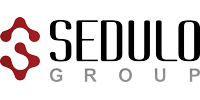Before COVID-19 transpired executives were concerned with their strategic assumptions and the results of getting them wrong.
A February 2020 Gartner study cited lack of confidence in strategic assumptions as the leading corporate risk among senior executives across a diverse set of industries and global geographies in Q4 2019.
A strategic assumption can be defined as the unstated belief that something is likely to occur to enable an achievable strategic goal. Depending on the individual company, the assumptions may vary from the most granular beliefs (e.g. cereal must always be eaten with milk) to events with global impact (e.g. global warming will continue to drive climate change). Business specific examples may include assumptions about fluctuations in consumer attitude, legal frameworks, changes in geo-political climates, and an ever-aging world population.
Most companies formulate individual strategic goals on an annualized basis, charting courses of action to remain competitive based on events they assume will transpire; many organizations rarely take the additional steps of defining the likelihood of their assumptions and ensuring that they’re measurable to detect change. For those companies that do engage in strategic planning and identify their assumptions, many fail to review and test their assumptions at regular intervals to detect whether their assumptions continue to hold true.
Identifying and testing assumptions today matters more than ever
Accenture published a report (April 2020) which affirms that consumer attitudes, behaviors, and purchasing habits are changing in light of COVID-19. The report suggests that the pandemic is propelling what were previously considered long-term trends into today’s behaviors, and predicts these changes are likely to persist once the world returns to normal. During quarantine restrictions, many people who have never before fully embraced digital technologies are now using the internet to communicate, learn, entertain, and purchase a myriad of goods and services – which is leading to robust change across many sectors, global populations, and more.
As it takes approximately 60-90 days for a behavior to become a habit, many of us have had enough time to form new habits; COVID-19 quarantine restrictions have been in place since mid-March (in the United States) yielding roughly 2 ½ months, which is more than enough time for sustained lifestyle changes. The true effects are only just now beginning to be understood with the bulk of discovery not likely until years later.
Since many of COVID-19’s behavioral effects on society are just now coming to light, it is more critical now than ever to evaluate your strategic assumptions. For example, what happens if a hypothetical office equipment manufacturer assumes they will have year-over-year positive incremental growth but failed to identify that their entire strategy is based on a core tenet that is no longer valid (the tenet that businesses will never entirely shift to remote workforces)? What if enough companies suddenly pivot to entirely remote workforces, as we’re beginning to see today with many of the tech giants (Facebook, Twitter, etc.)?
If enough companies no longer need to provide office-based equipment, fueled by the rise of the remote workforce, this hypothetical company will fail unless its leaders choose to adapt to accommodate the new norms. On the other hand, it is possible that this hypothetical company may have correctly identified their assumptions and understood the criticality an office-based workforce plays to its core survival. If their core assumptions are known, then this would be the time to closely monitor today’s events to detect whether contingency plans need to be acted upon.
The key to assess strategic assumptions
At a basic level, assumptions need to remain constant over a fixed term for the strategic goal to remain valid. The fundamentals needed to test strategic assumptions should compare against what is realistic versus theoretical in the near-term landscape. The key factor is learning to recognize what critical assumptions are being made and identifying a way to test that they remain valid in a dynamic marketplace. Assumptions that cannot easily be tested should be avoided and creation of a new goal (or modification) is strongly recommended to provide the most secure footing.
Consider the below examples as these provide a realistic view of how to address strategic assumptions:
Example: Is your strategy assuming that a market with low organic growth will suddenly exhibit robust year-over-year growth in the near-term?
Action: Consider reviewing contingency and risk mitigation plans to determine the next course of action in the event the assumption becomes invalid over the near-term due to unforeseen events.
Strategic Exercise: Develop a methodology and overall framework to test assumptions to ensure they still hold true. Establish a cadence to review real-world events (earnings calls, M&As, emerging trends, and other developments) against the assumptions to detect any that may become invalid over the defined timeline encompassing your strategic goals.
**
Example: Is your goal expecting consumers to shift to a 100% ecommerce platform within the next five years?
Action: Examine the detailed plan to determine which assumptions need to remain valid for the overall goal to become realized. If multiple assumptions are present for a single goal, consider separating into smaller, more realistic goals so they can be individually measured against marketplace dynamics.
Strategic Exercise: Facilitate a scenario planning workshop with senior members of the team to play out theoretical market events and roleplay how your company and others would respond. This may uncover hidden threats and reveal the need to respond appropriately.
The important part to consider is establishing a regular cadence of reviewing assumptions to ensure that they remain valid against the changes in the global marketplace. A survey of open source data (which may include market trends, competitive developments, and consumer behaviors, etc.) in addition to other qualitative means may reveal that one or many assumptions may become invalid and as a result highlight the need to adjust the individual strategic goal to ensure optimal competitive fitness.
Taking action – putting it all together
As assumption testing can range from the most basic testing procedures (reading the news and thinking critically about assumptions) to the more complex methodologies based on the organizational demand, it is important to be mindful of your company culture and overall appetite for challenging established norms. Basic monitoring regimens that aggregate public data can alert you to changes within the marketplace and be easy for executives to digest; however, more time– and labor-intensive strategic wargaming (or risk mitigation planning) can effectively be used to uncover hidden threats and challenge standing assumptions to ensure they remain valid.
The changes we’re seeing in today’s society are behaviors that were predicted to appear many more years down the road, but with the turbulence we’re experiencing as a global society (pandemic, recession, civil unrest, climate change, and many others) these changes have rapidly become mainstream as quickly as a post can go viral.
With all this in mind, if you find yourself in a position privy to your organization’s strategic plans, now is the time to question whether your organization has identified the core assumptions it is making and determine whether these still hold true today – and take action to ensure your organization recognizes the need to adapt (if necessary) to mitigate the effects of missed opportunity.
Sedulo Group can help identify, test, and monitor strategic assumptions to alleviate concerns
As a leading provider of competitive & market intelligence, Sedulo has the tools, team and expertise needed to assist with identifying and testing your strategic assumptions to ensure they hold true. Our skilled team of intelligence professionals uniquely combine information derived from primary and secondary research sources, with a strategic consulting approach, to transform information into actionable insights and strategic implications.
Examples of how we can assist with examining your strategic assumptions include:
Scanning your market to identify shifts in consumer behavior, yielding insights and implications based on today’s market dynamics.
Conducting primary research interviews to uncover qualitative insights which are unavailable within the public domain.
Facilitating scenario planning workshops to identify, test, and validate strategic assumptions as well as hidden threats and obstacles.
Learn more about Sedulo Group’s methodology, services and team.
Contact us today for a free consultation!
Erik Iwanski
Associate Director, Business Services Group
References

